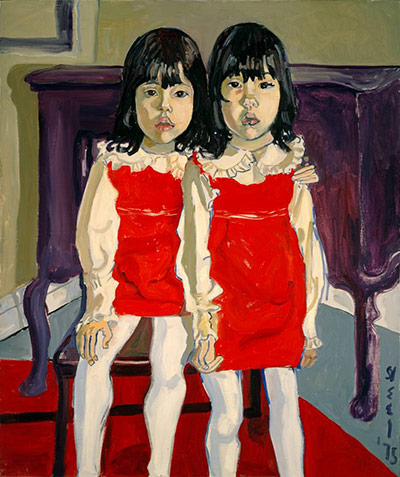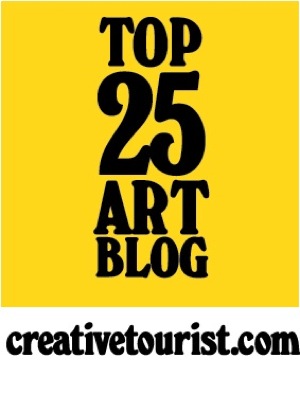Alice Neel: Painted Truths, currently showing at the Whitechapel Art Gallery is a challenging exhibition to put into words: Adrian Searle, writing in the Guardian sums it up well as 'exhilarating, touching and a bit wild' but thinking over this powerful body of work, the word that returns to me more than any other is 'unflinching'.
Credited with challenging the conventions of portraiture, Alice Neel is perhaps best known for painting many of the artists, poets and radicals of her day - portraits of Andy Warhol and Frank O'Hara are amongst those in this retrospective. However, as this exhibition makes clear, her art also depicts a range of subjects usually excluded from mainstream portraiture - the elderly, pregnant women, families from Harlem's immigrant communities, a Fuller Brush salesman, a child clutching a cat.
These works are often highly exaggerated, sometimes even grotesque: Neel's subjects are represented in bold brush strokes and florid colours, with spindly long-fingered hands, fixing the viewer with wide, troubling eyes. Yet in spite of this almost cartoon-like exaggeration and distortion, there is a profound honesty in Neel's work. Her subjects are depicted in all their wonky awkwardness: scarred, saggy, abject, uneasy. Often highly unflattering, these are also tender, touching paintings that expose the vulnerabilities and anxieties of her subjects - portraits made powerful by their psychological, if not representational truth.
This sensitively-curated exhibition focuses predominantly upon portraiture structuring Neel's work with a series of themes including Portraits and Memory, Nudes and the Detached Gaze; yet some of my favourite works here are in fact cityscapes: portraits of Neel's New York. These range from jaunty images of New York street architecture executed with an unusual lightness of touch, through to darker and more troubled works which hint at the aftermath of the Depression, but also Neel's own sense of herself as a woman restricted and confined within a domestic environment. Neel's involvement with New York and its artistic and radical communities becomes a thread that runs through this exhibition, which also references the events of her life, from early tragedies (in her early twenties she lost one daughter to diphtheria and another in a custody battle with her first husband), and subsequent breakdowns, to poverty, failing relationships, but ultimately, towards the end of her life, her rising fortunes as an artist.
Although Neel is often represented as something of an iconoclast, what interested me about many of these works was their references to the tradition of painting, evoking everyone from Van Gogh to Cezanne to Edward Hopper. Night, one of my favourite paintings in the exhibition, and certainly amongst the most understated, recalls the abstract expressionist Clyfford Still; whilst Dead Father seems reminiscent of the work of Marc Chagall. Yet regardless of style, what unites this formidable and varied body of work is its honesty. It is the sheer frankness, the unflinching directness of Neel's 'painted truths' that makes them so exhilarating - and ultimately gives them their power.
Alice Neel: Painted Truths is at the Whitechapel until 17 September.

















